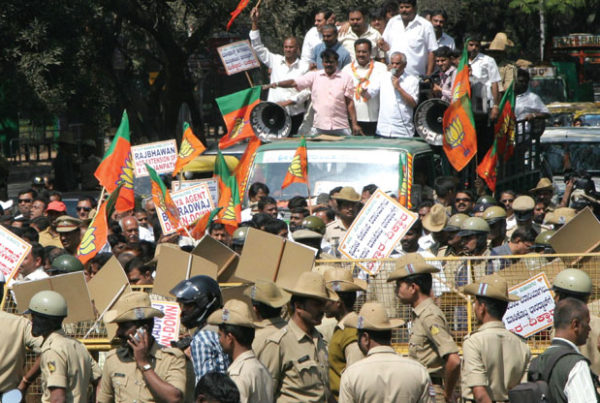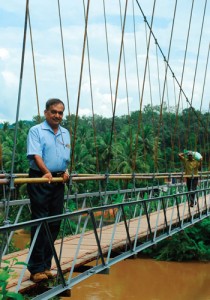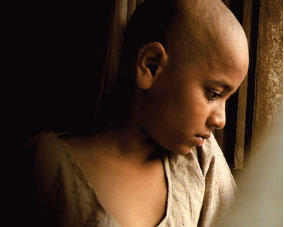After a lull, churches are once again under attack. This time though, the state has put the onus of security on the victims themselves, says Sanjana Chappalli
 Damaged: The crucifix at the Milagres church, Mangalore, in 2008
Damaged: The crucifix at the Milagres church, Mangalore, in 2008Photo: KPN
AT 8 AM, getting to college on time was the only thing on 20-year-old Jackson D’Silva’s mind. By 8.30 am, however, Jackson was in hospital with a fractured leg — he had been attacked by three men wielding heavy sticks. In Kundapur, a small coastal town 445 km from Karnataka’s capital Bengaluru, vicious attacks are the price people like Jackson have to pay if they object to their gods being desecrated.
On February 14, two days before Jackson was attacked, an idol of Infant Jesus at the Carmelite Father’s Church in Kundapur was damaged by people, whom the official police statement dubbed as “anti-social elements who intentionally struck late at night”. The next morning, as the damage came to light and people gathered outside the church, an altercation broke out between worshippers and others who accused the Church (and its worshippers) of forcible conversions. “[On the 16th] I was attacked by three people. One of them was present the day the altercation broke out,” says Jackson.
Across Karnataka, churches and religious institutions in the districts of Mysore, Mandya, Dakshin Kannada, Uttara Kannada, Udupi and Gulbarga have been damaged in the last two weeks. The attacks are strikingly similar to the spate of attacks on churches across the state in August-September 2008. At the time, keen to avoid public embarrassment, the newly-elected BJP government ordered a judicial inquiry into the attacks and directed police to provide security to churches and Christian religious institutions.
Sixteen months later, as churches find themselves under attack again, instead of protecting them, police have issued notices holding the heads of the institutions responsible for the attacks on them. TEHELKA has a copy of the notice issued by the inspector-in-charge of Bengaluru’s Hennur police station to the Logos church that falls in its area. It states baldly, “In case of any untoward incident or attack on your institution, you will be held responsible.” Striking an unapologetic note, Bengaluru City Police Commissioner Shankar Bidari told TEHELKA that the notice had been issued following a routine weekly meeting where police inspectors were instructed to “maintain close contact with the religious institutions under their area of command”. Significantly, however, no temples or mosques were issued such notices. His response? “Only churches are being attacked, so my force has been instructed to pay attention to only churches for now.”
Such extraordinary notices can hardly have been issued by the police of their own accord. A day before the notices were issued, Karnataka Home Minister Dr VS Acharya went on record to state that “the government cannot protect the victims of the recent attacks on churches” and that “churches are responsible for their own safety”. Despite a public outcry against the minister’s statement absolving his government of the responsibility of maintaining public order in the state, there has been no retraction or clarification.
HOME MINISTER VS ACHARYA MAINTAINS THAT THE GOVERNMENT CANNOT ENSURE SECURITY FOR CHURCHES
The controversy flared up after the release of the Justice BK Somashekhara Commission’s interim report on February 2, 2010. In the highlights of the report, the panel records “strong impressions” that members of the Bajrang Dal, the Sri Rama Sene and the Vishwa Hindu Parishad were “mainly responsible in attacking the churches or places of worship”. Additionally, the report again speaks of impressions that “top police officers, the district administration, other authorities and panchayat heads” in three districts “colluded with the members of Bajrang Dal and Sri Rama Sene directly or indirectly in attacking the churches or places of worship”.
Bizarrely, however, the commission then recommends withdrawal or compounding of all criminal cases registered, investigated or chargesheeted before December 31, 2008 against persons or institutions for the attacks. The final report is expected within a few months.
—
This article was originally published in Tehelka, a leading independent news magazine in India, known for its investigative journalism.


